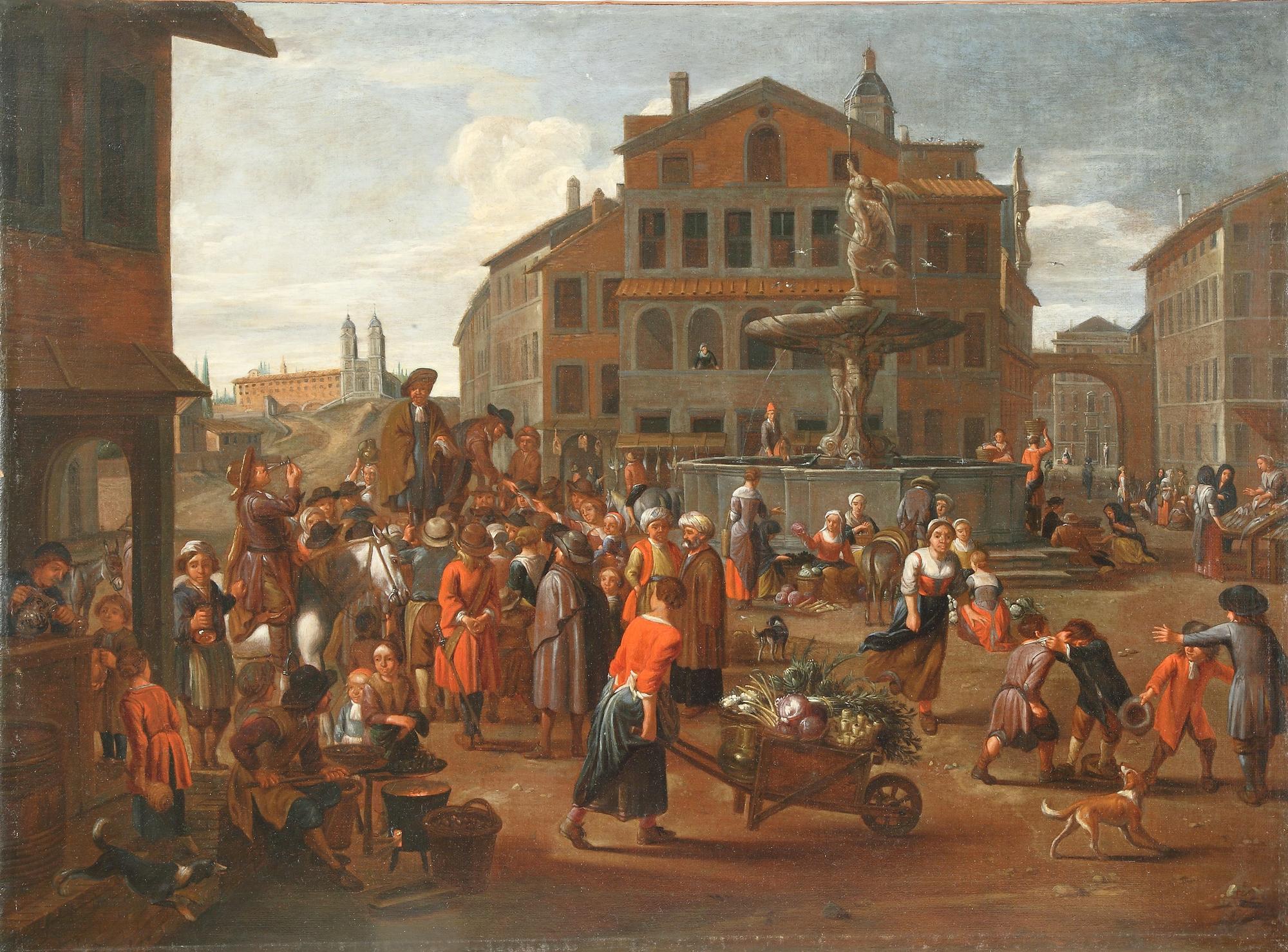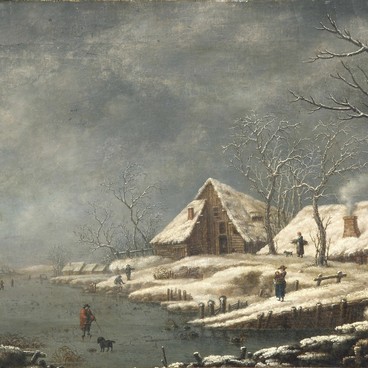The Street charlatan in a Roman square was painted by Alexander van Bredael at the turn of the 18th century. He depicted a noisy square with numerous figures of people and animals: citizens are having leisure time near a fountain, trading vegetables, and talking to each other; kids are playing outdoor games, dogs are scampering about. In the left-hand side of the picture, there is a high-set man with a crowd around him: they are listening to a quack, a charlatan doctor. Originally, the word charlatan (from the French charlatan or Italian ciarlatano) meant a travelling trader in medicines. Over time, such doctors with their youth elixirs and powerful cure-alls earned a bad reputation. Quacks were regulars at fairs and often advertised their miracle making medicines in city squares.
1 / 2
Street charlatan in a Roman square
Время создания
late 17th – early 18th century
Размер
60x82 cm
Техника
canvas, oil
Коллекция
Выставка
#1

Alexander van Bredael
Street charlatan in a Roman square
#2
#3
The artist invented the landscape in the picture, based on Roman sites. He depicted several historic spots at once, though they cannot be seen from any one point in reality. In fact, he combined a view of Barberini square and the beauties of Spain square.
#4
The fountain in the centre of the picture reminds of a real fountain called Triton in Barberini square. Its plinth is made up by four dolphins with a huge shell on the tips of their tails. However, in the actual fountain there is Triton standing on the shell while in Alexander van Bredael’s picture there is a statue of Glory.
The background church on the left resembles Trinitá dei Monti, the church of the Holy Trinity on-the-Hills, in Spain square in Rome. Experts suppose that the painter used Piazza della Trinita de Monti, an engraving by the French artist Israel Sylvestre the Younger, as a model.
#5
Israel Sylvester. Holy Trinity Square on the mountains. 1640-1660 years. Palazzo Poli, Rome, Italy.
#6
In his picture, this church does not yet have the grand staircase built in the early 18th century on the site of a dangerous treed descent. The staircase is called Spanish now.
#7
Alexander van Bredael often painted genre pieces with fairs, cattle markets, and villages. He is also known for his festival pictures of Antwerp, the city where he lived and worked.
#9
Alexander van Bredal. The Ommegang in Antwerp. Palace of Fine Arts, Lille, France.
#8
In 1685, he became a member of the St. Luke guild in Antwerp, an association of artists, sculptors, and printers. The guild was called after the apostle Luke, the patron of artists, who was thought to have been the first to paint the Virgin Mary. The guild controlled the quality of pictures and put its brand on accepted works of art. At various times, the guild included artists like Peter Paul Rubens, Jan Vermeer of Delft, Jan Breughel Senior.
#10
Yaroslavl Museum of Fine Arts
читать дальшескрыть
00:00
00:00
1x
Street charlatan in a Roman square
Время создания
late 17th – early 18th century
Размер
60x82 cm
Техника
canvas, oil
Коллекция
Выставка
Открыть в приложении
Поделиться





